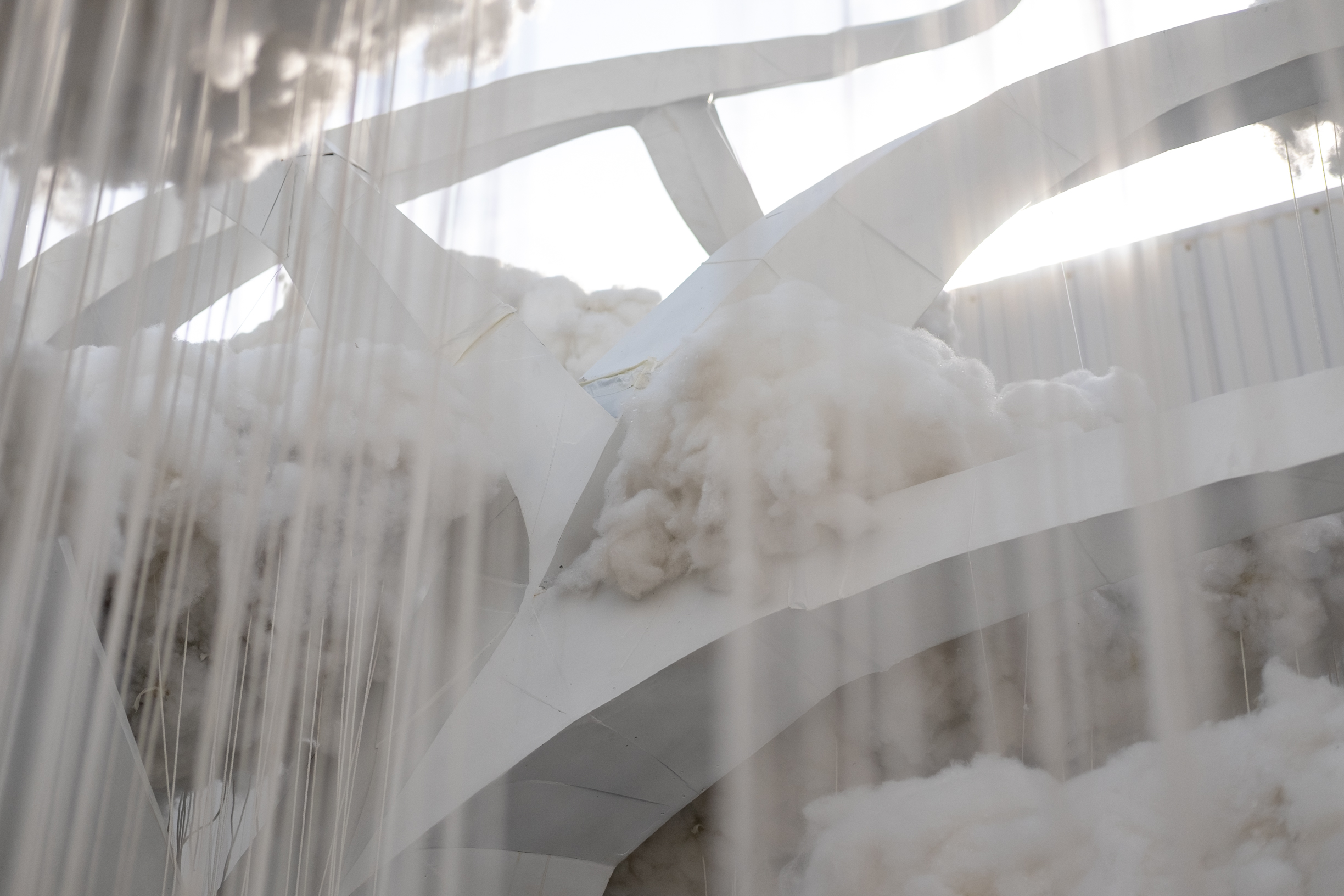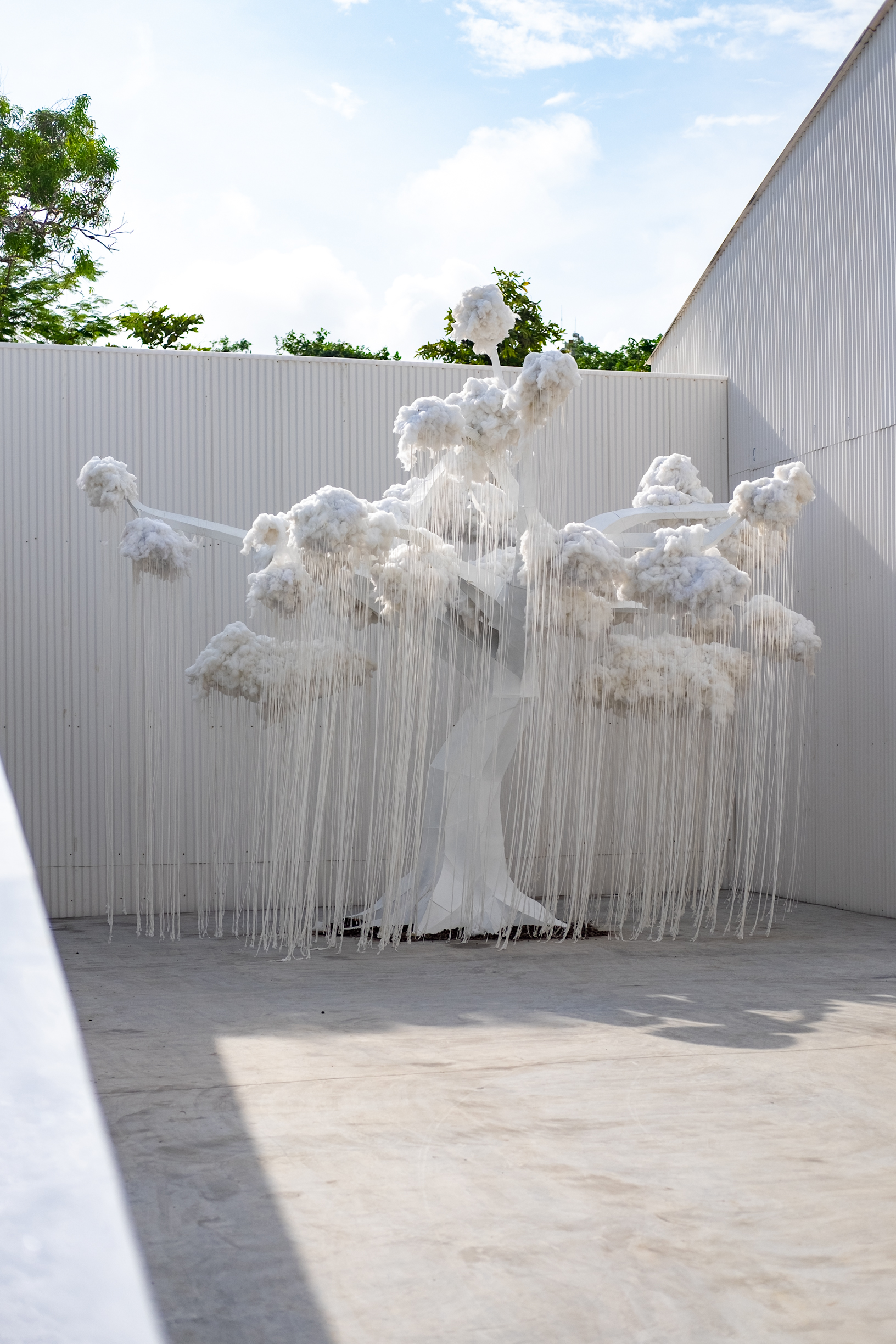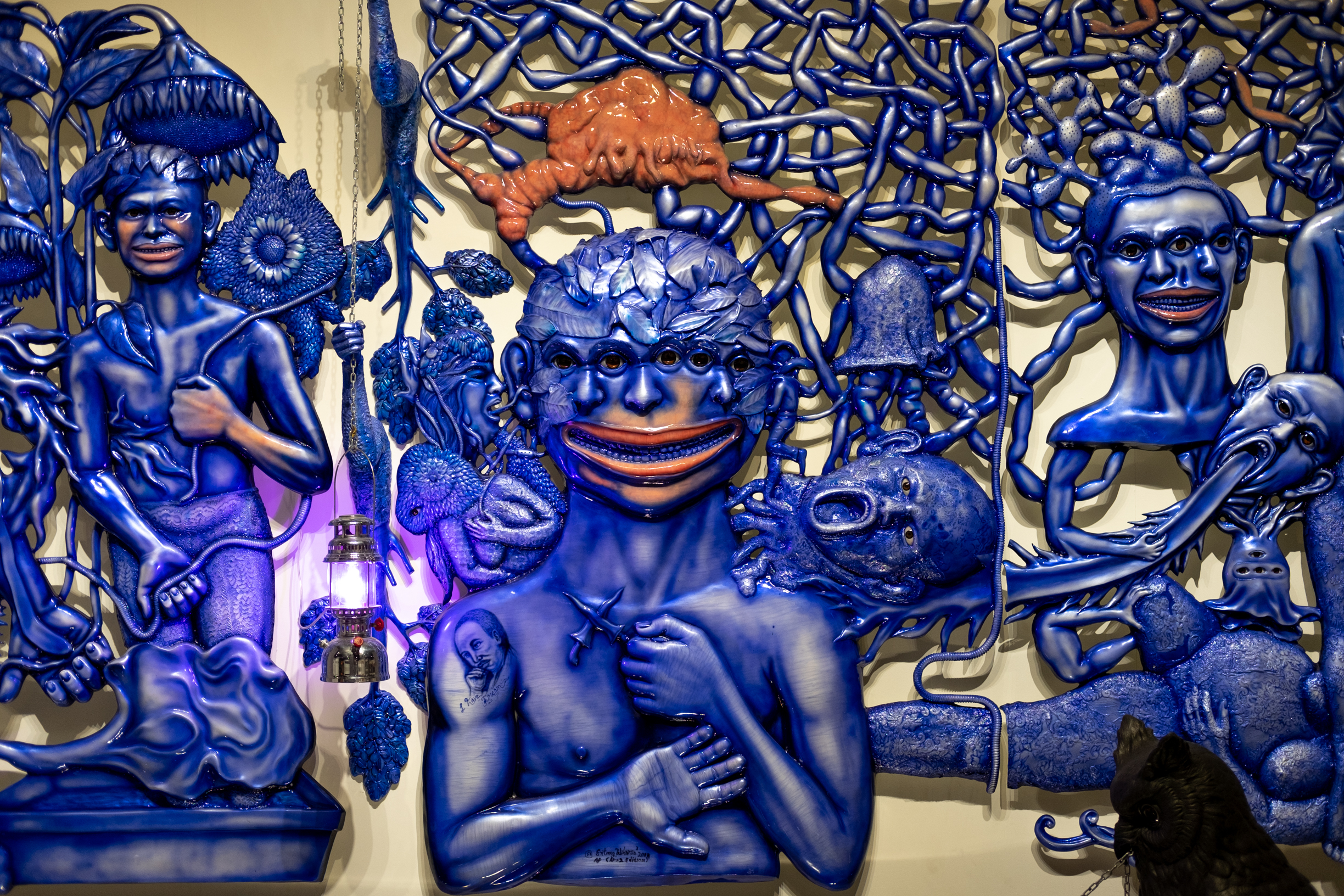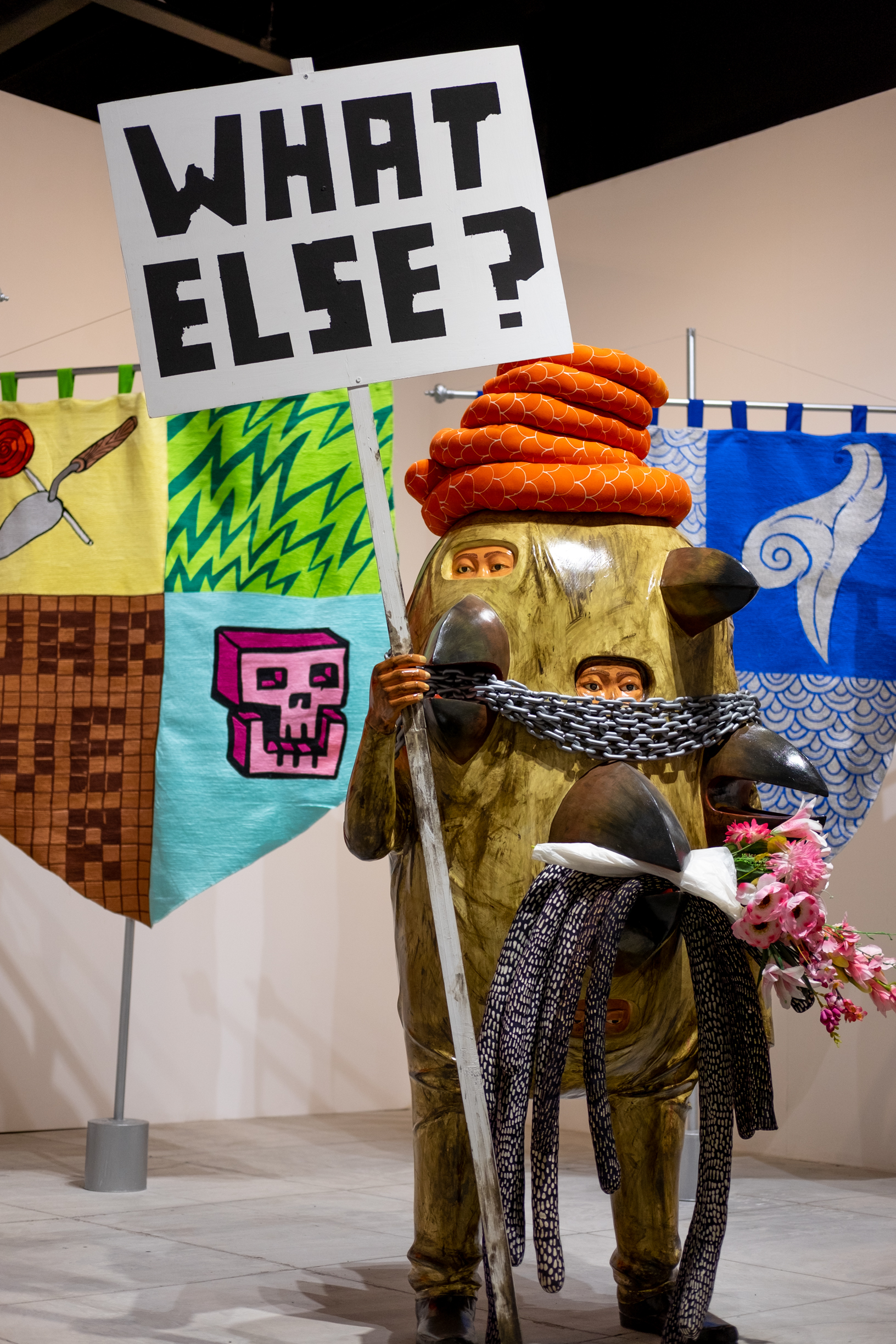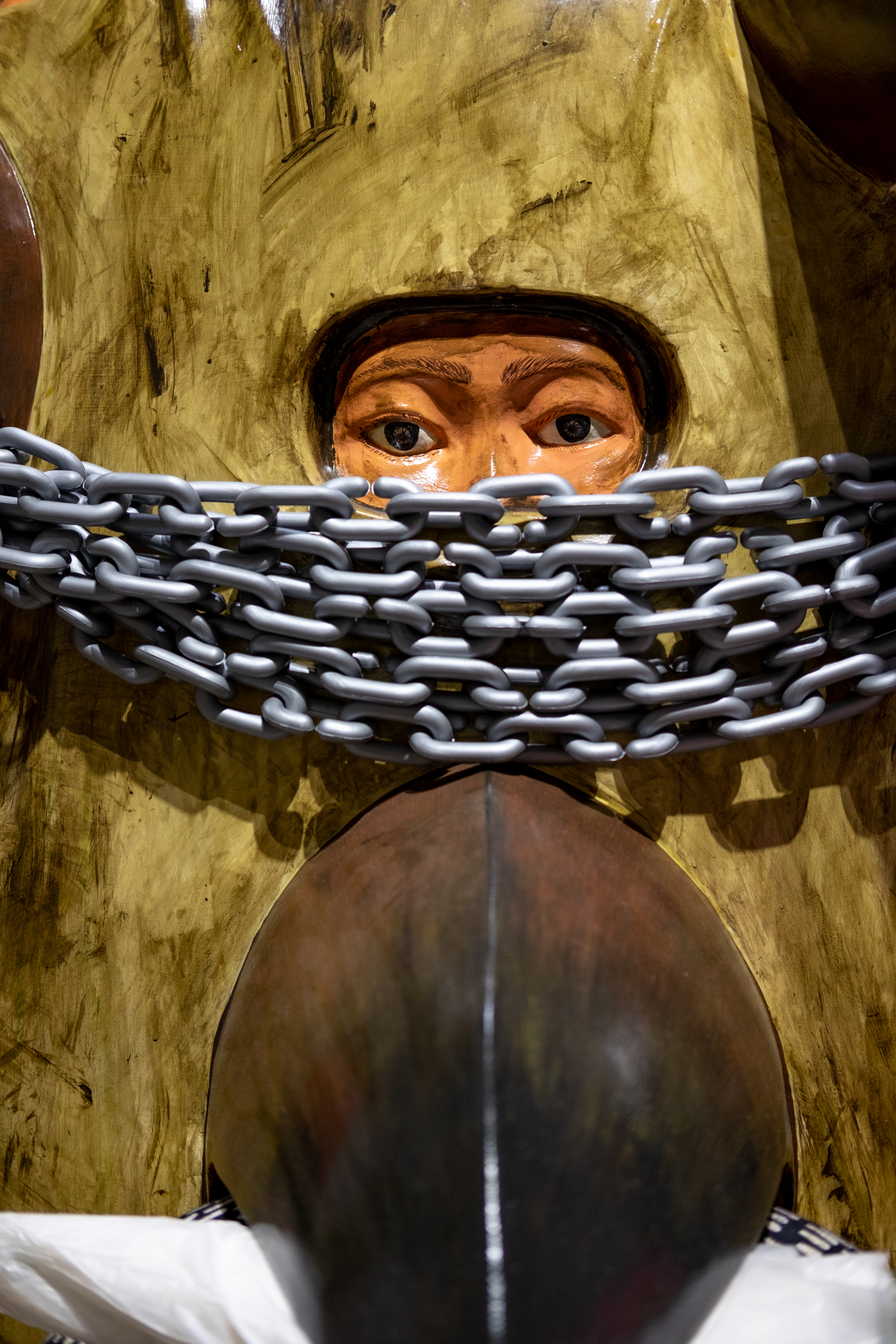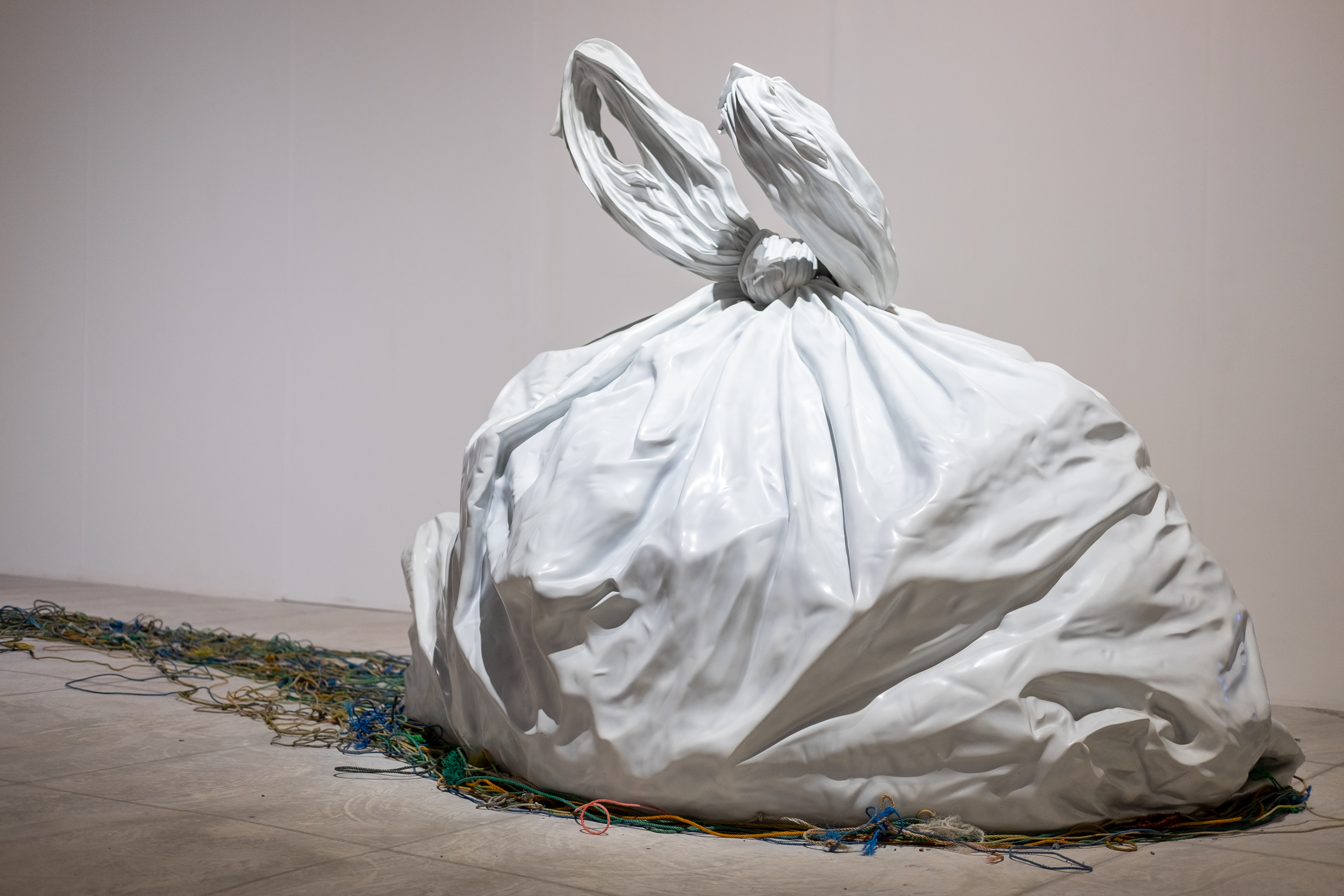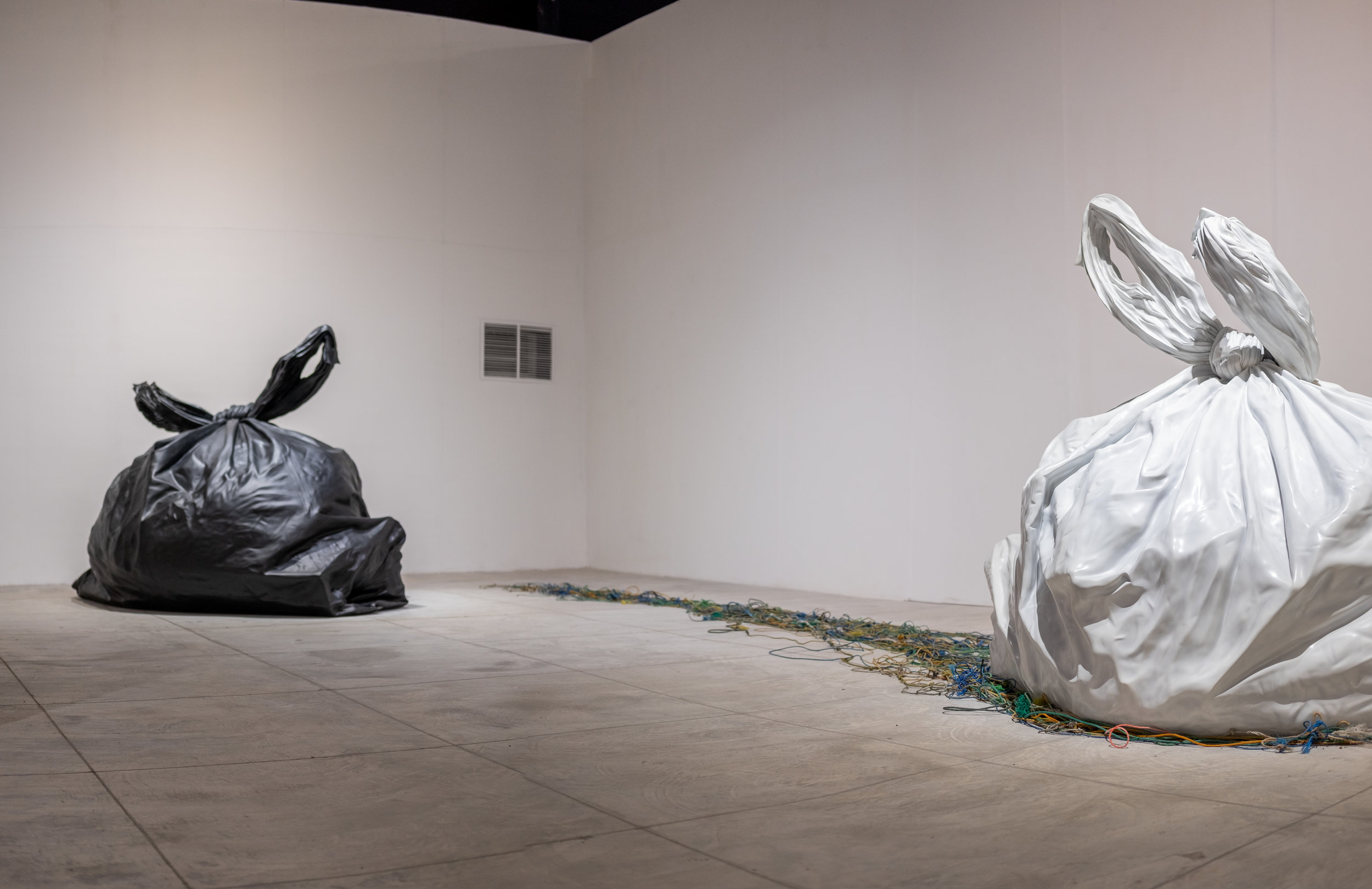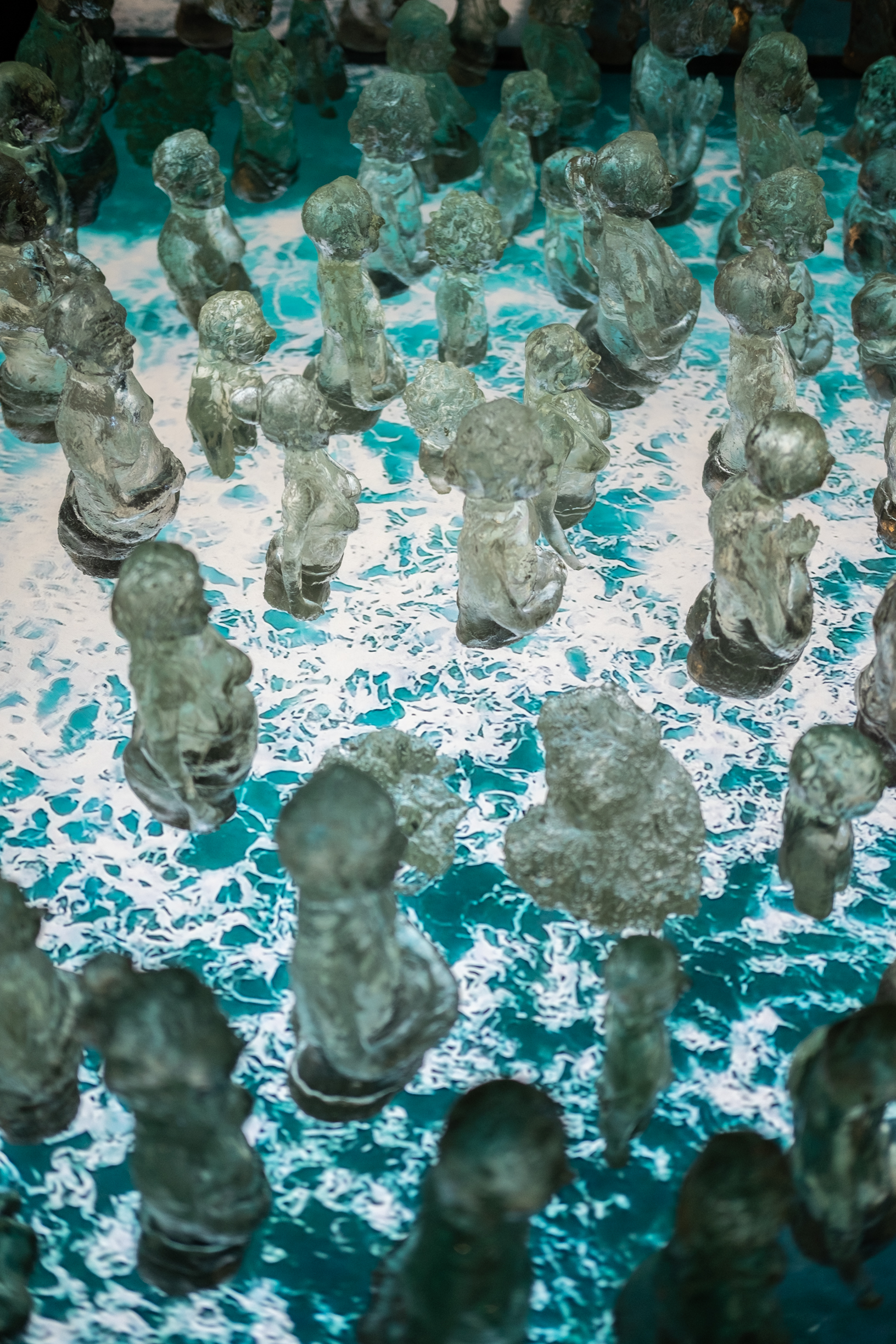Art Bali 2018 | Five Standout Indonesian Artists
Photo by Genesis Creative Centre team
There are two camps when it comes to discussing contemporary modern art.
On one side we have the downright offended and somewhat angered camp exclaiming, “That’s not art - that’s just a pile of bricks” and “my little brother could do that!”. And on the other side, of course, the appreciators digging into each piece looking for meaning and intentions.
The beauty of art is that no one can be right or wrong when creating, viewing or even interacting with art. The mere acknowledgment of any piece validates its existence since art accepts all perspectives. In the world of wine, sommeliers (that's the fancy name for wine expert) often encourage beginners to make educated guesses on the characteristics of the wine they are drinking. They know that taking the time to taste, think, question and conclude leads to a better appreciation and deeper understanding of the grape drink.
Art Bali brought this experience to the island. In conjunction with 34 talented artists, Art Bali prominently displayed some of the best Indonesian contemporary artists that the island has recently seen. It is their winning combination of beautiful conceptual craftsmanship, multi-layered meanings and their sharp response to socio-political subjects.
Here, we look at what we believe to be the 5 prominent Indonesian artists from the November 2018 exhibition.
ADI PANUNTUN
The Cosmic Tree 2.0
2018 | Tree Sculpture (Fibre resin, Steel, Dacron, Rope),
video projection & audio
600cm x 450cm
Using video projection mapping (a method of projecting a custom made animated video onto a physical 3D object) Panuntun plants his cosmic tree firmly at the entrance of the art gallery - the perfect piece to prime the mind for whats to come.
The tree, with its strong trunk rooted into the concrete, sprouts outwards and upwards with the tips of the branches holding white fluffy clouds. Thin strings dangle densely from each cloud drawing the eye back down towards the ground where the tips end an inch from the surface.
The video and audio complete the experience by animating raindrops on the strings, triggering thunder and lightning. The raindrops, complete with dripping sounds, are more like cosmic raindrops as the artist intended to depict a connection to the universe (or maybe even cosmic consciousness). The thunderous sounds are designed to rattle the cage of imagination and wake the curious mind. Now you are ready to enter…
ENTANG WIHARSO
Wisdom
2018 | Aluminium, car paint, polyurethane, resin, graphite,
steel bar, lightbulb, electric cable, thread, colour pigment,
lamp, stainless steel, chain.
300cm x 450cm x 175cm
If this piece reminds you of your last nightmare, you might not be far off. Wiharso’s aim was to depicts a dream in which we all celebrate freedom. The blue figures seem to represent a recognisable human form but void of any familiar skin types, maybe hinting that this version of us is foreign or not from this world. Of course it is open to interpretation.
The prominent central figure sports five eyes - the artists way of telling us to keep an open mind. All red lipped faces seem to be grinning apprehensively, as if they are aware of the wilting flowers, characterisations of death and tangled chaos but choose to remain positive. Is this the classic “ignorance is bliss” or an acknowledgement of being guilty for our destructive actions?
On the floor, the bust of lady liberty lays on its back with a deadpan expression as it is pulled by a heavy chain by a strong dark owl. Here the socio-political message takes it more obvious form - the Western concept of freedom has perished and a new one takes its place. But what is this shadowy dark creature?
EKO NUGROHO
What Else
2018 | Fibreglass paint with acrylic, wood,
manual embroidery.
Variable Dimensions
There is a cyclical ‘battle’ of ideology between traditions and progressive actions. The now world famous Eko Nugroho tackles the subject of pride and identity represented by a armoured character in a defiant pose. The picket sign has “What Else?” written on there as if to sarcastically and mockingly question what more could be thrown their direction that challenges their traditions.
“Who are ‘they’?” you might be asking. Looking closer at the character, we see there are more than just one set of eyes peering out from the armoured figure. This represents tribalism - a group of individuals subscribing to the same set of values all housed by a single name, or in this case, a figure.
This tribe must represent traditions and nostalgia with its natural defensive attitude to change. Bound in chains, sporting blunt beaks, carrying a bouquet of flowers and a thick book with a black cover (biblical reference much?), this figure is soaked in symbolism for resistance to change. The banner flags draped behind feature nonsense beautifully embroidered into fabric - an old school method of representing who you are on a battlefield.
HANDIWIRMAN SAPUTRA
Tak Berakar Tak Berpucuk No.3
2011 | Resin fibre, duco paint, rope.
200cm x 120cm x 160cm
Tak Berakar Tak Berpucuk No.2
2011 | Resin fibre, duco paint.
200cm x 120cm x 160cm
Where old values and new values most certainly clash is in the subject of purchasing and disposal. In a world ravaged by consumerism, no socio-political art exhibition would be complete without the creative comments on trash. Saputra figuratively dives into trash and brings the ugly disposable truths to the surface for us to see.
All over the world, but most definitely in Indonesia, there is a strange practice of throwing trash into rivers - but neatly wrapping it all up in plastic bags beforehand. Saputra plays with colour to represent the seen and the unseen, something the Balinese like to call Sekala Niskala. The black trash bag is made to represent an emptiness waiting to be filled with manifestations of being and existence, something that is unseen. The white trash bag is therefore the tangible, physical and seen aspect of what we throw away.
A tangled mess of colourful ropes twist and wind their way from beneath the white bag (the seen) towards the black bag (the unseen) not quite making contact yet. The use of ropes can epitomise the mess we have made, the ‘string’ of bad decisions we have made revolving around consumerism and its eventual harmful effects on the unseen world.
I WAYAN UPADANA
Manusia, Imaji Air dan Cahaya
2018 | Resin, LED TV.
Variable Dimensions
Indonesia exists as an archipelago rich in resources and formidable as a maritime nation. The lust for spices and trading in Indonesia has brought wealth, but to many, at the expense of spilt blood. Upadana constructs a mesmerising installation to draw parallels between the past and the present using figures, water and light.
The socio-political connection between past and present is tethered to the story of Ageng Tirtayasa of Banten (1631–1695), a Sultan who prospered in trading with many Asian countries. While his successful methods were borrowed from the West, his eventual defeat came not by the Dutch East Indies Trading Corp (AKA the VOC), but his own son.
Upadana must be signalling the complex balance of foreign and local values, old and new ideologies and differences in spiritualism. With tourism being Bali’s largest economic sector, the piece literally sheds light on the assortment of transparent human figures, local and foreign, through the clever use of waves recorded from the cliffs of Uluwatu - home to the most well known Balinese Temple, Pura (Luhur) Uluwatu. Spaced evenly apart, there seems to be harmony amongst the people as all their backs face the open ocean, facing inland, presumably towards Mount Agung.

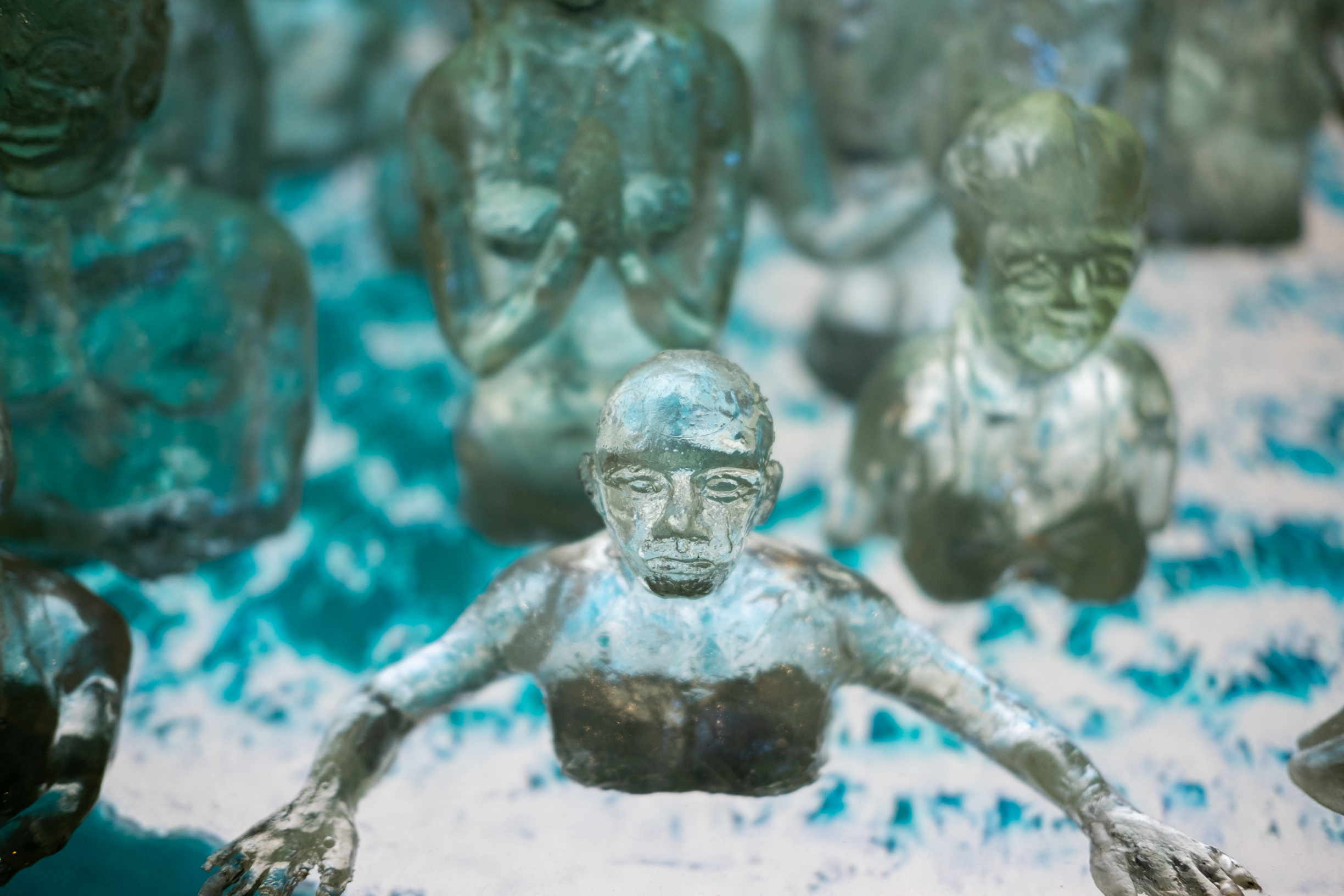
Art Bali’s theme, Beyond the Myth, encouraged creators and visitors to challenge the inheritance of cultural values and ask more engaging questions. The one and a half month long exhibition was a resounding success in bringing Indonesian artists to the foreground, and the good news is, the next instalment has arrived. Following the new theme of “Celebration of the Future” the exhibition opens for public from 15th Dec 2018 - 15th Jan 2019. So dive into more art, lift the names of local artists and celebrate the future!
Find out more from Art Bali’s website www.artbali.co.id



